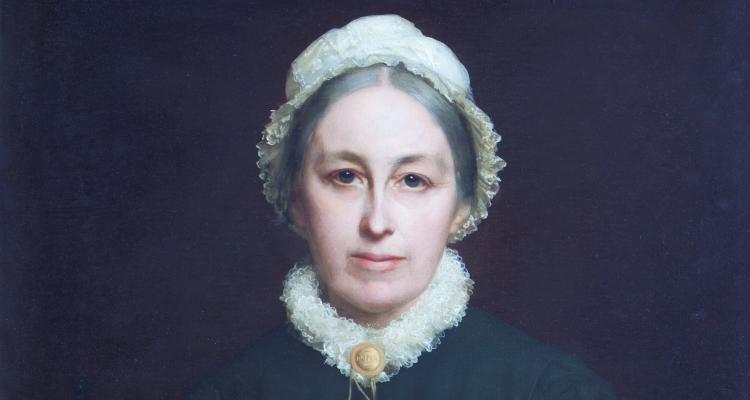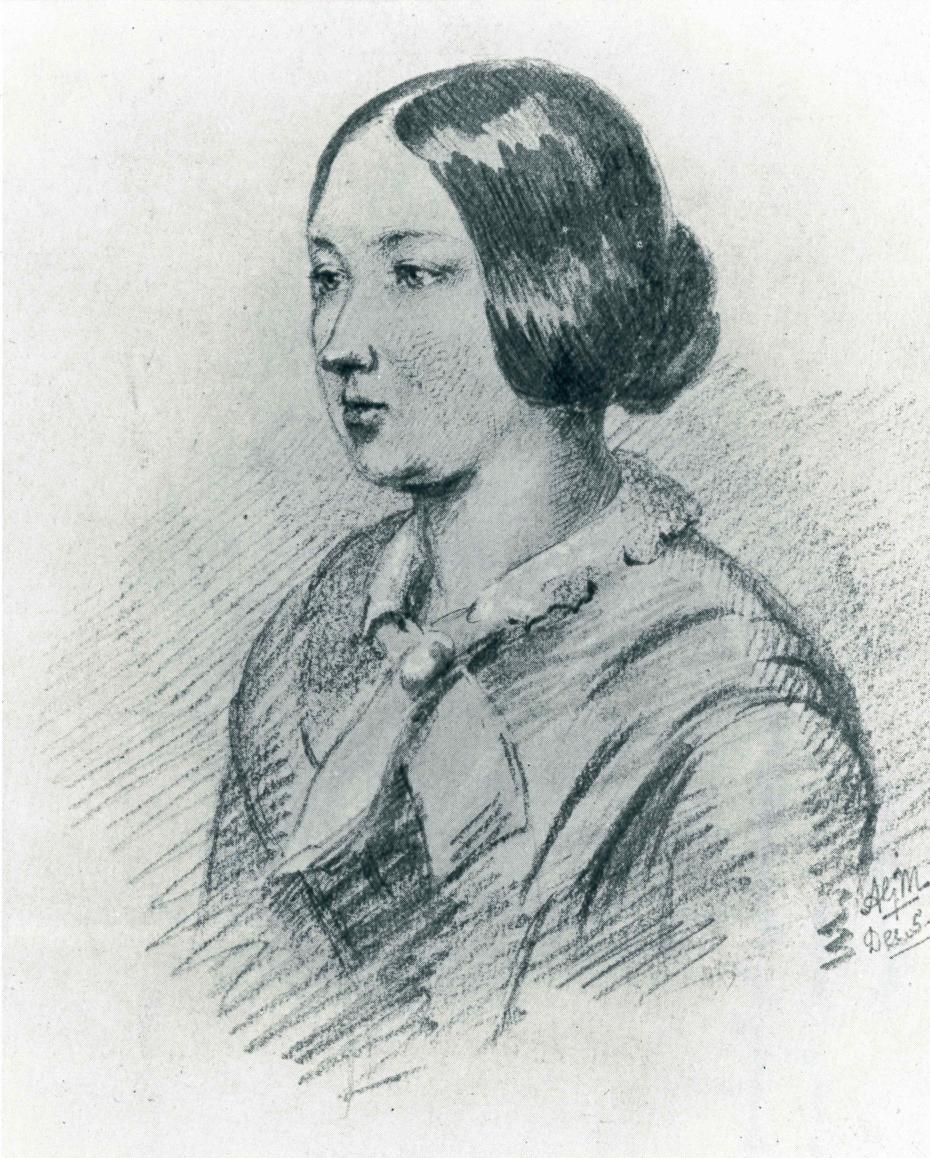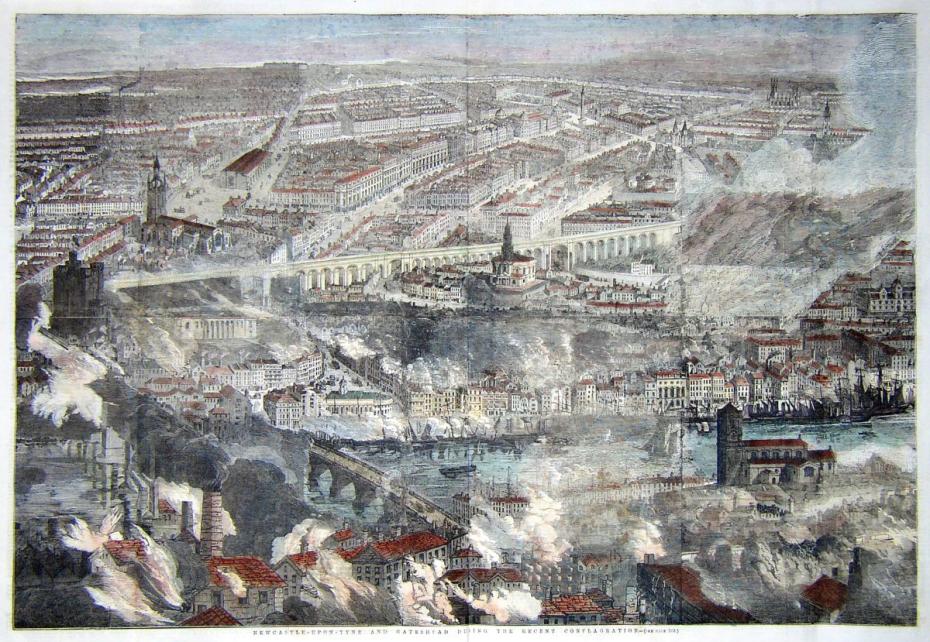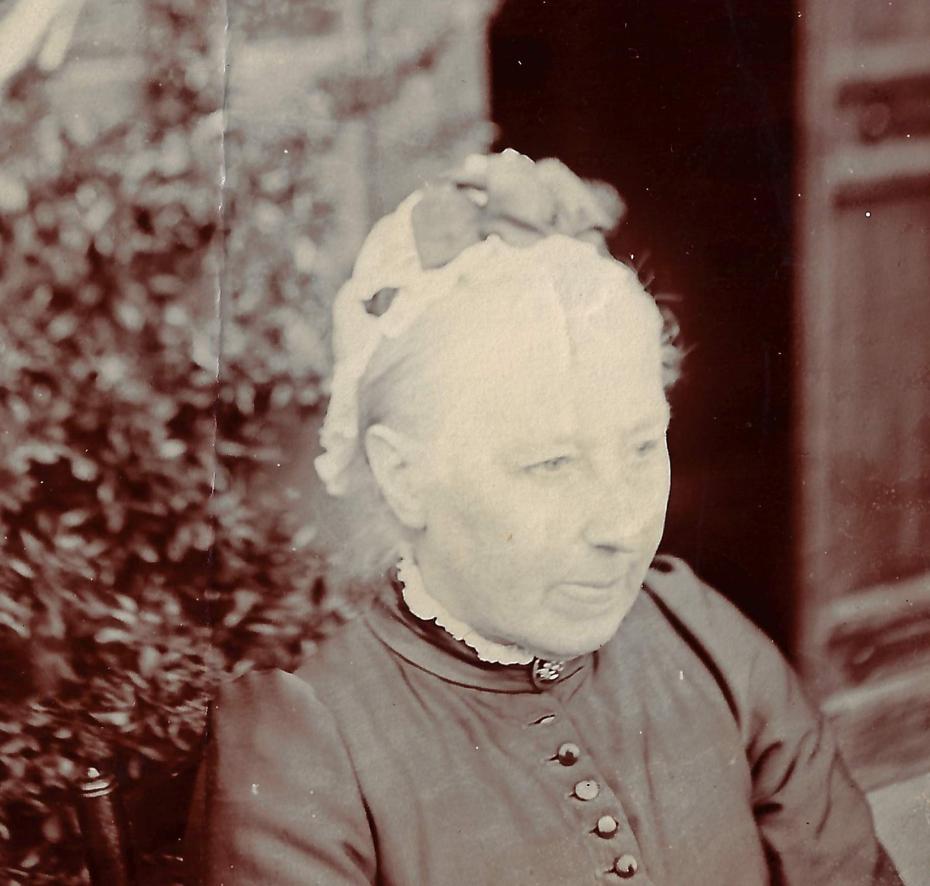Caption: Portrait of Emily Davies in 1851 (aged 21) by Annabella Mason. Annabella and Hannah Mason were family friends and frequent visitors to the Davies home in Gateshead. Emily Davies noted that Annabella, ‘used to take likenesses, and our albums contained sketches of Jane, William and myself.’ (archive reference: GCPH 5/4/8).
Childhood and young adulthood
Emily Davies was born in 1830 in Southampton. Her father, Anglican clergyman John Davies, was born in Llandewi Brefy in Cardiganshire. His father was a Welsh farmer. John Davies obtained a B.D. from Queen’s College, Cambridge, and wrote several works of theology.
Soon after her birth, Emily’s family moved back to Chichester, where her parents had previously lived. In 1840, when Emily was nine years old, they moved to Gateshead, near Newcastle, where, through the patronage of a former Bishop of Chichester, John Davies had been offered the Anglican living. Gateshead would remain Emily’s home until 1862 when, following the death of her father, she and her mother moved to 17, Cunningham Square, London, to be close to her older brother, John Llewelyn Davies.
In Chichester, Emily had learnt ‘a little Latin’ for her own pleasure, and because her brothers were doing it, but this stopped before the family moved north. In Gateshead, Emily’s three brothers were first taught in a small class taken by one of their father’s curates. Then John Llewelyn and William were sent to Repton School, before attending Cambridge University. The youngest son, Henry, went to Rugby School and was then articled to a solicitor. In contrast, Emily and her sister Jane remained in Gateshead. For a few months they attended a small day school for girls but after that their education was based at home. They had ‘some lessons’ in French and Italian and were also taught some music. ‘Our education,’ Emily would later recall, ‘answered to the description of that of clergymen’s daughters generally … “Do they go to school? No. Do they have governesses at home? No. They have lessons and get on as they can”’.
In Gateshead Emily used to write ‘themes’ – small, weekly compositions in English which were looked over by her father. With one of her brothers, she also wrote little ‘newspapers’, which many years later she described as consisting chiefly of short ‘denunciations and warnings against Popery and Tractarianism’ written in English, French, Italian, German and Latin. They were modelled, she said, on the Evangelical paper The Record, which reflected the family’s ‘sentiments’ at the time. The children also played at being candidates for parliamentary elections.
Alongside any studies, Emily and Jane were expected to help their mother in the house. ‘Our muslins, collars and cuffs etc, were washed at home and my mother, Jane and I did the ironing about once a month in a storeroom in the basement’, she recalled. ‘We did mending also, but not much of dressmaking or millinery’. Religion was an important part of daily life; the family gathered for prayers each evening.




